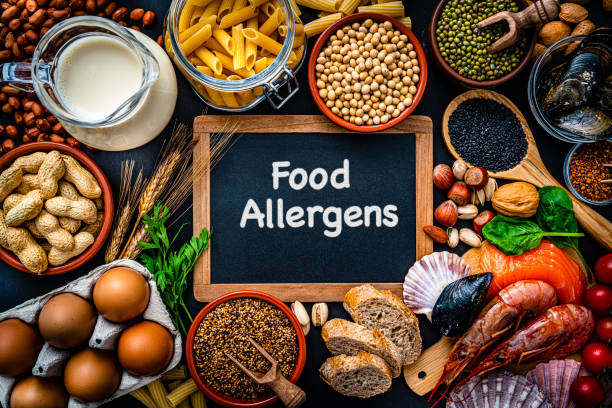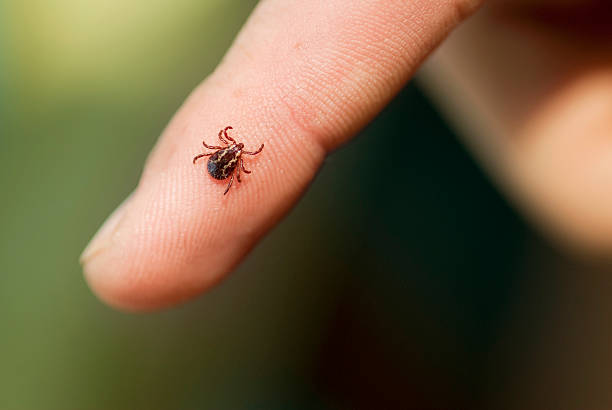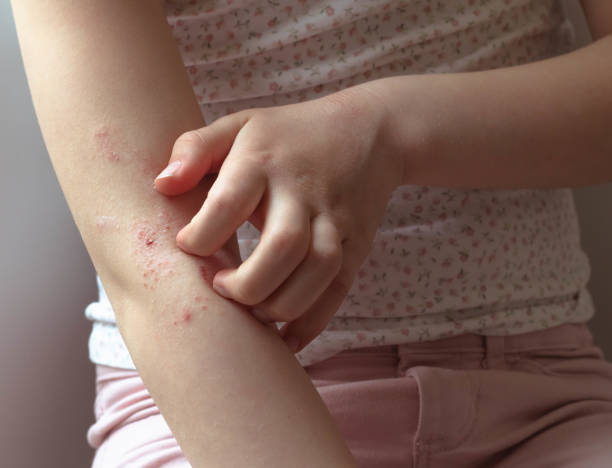Table of Contents
Introduction
Allergies in children are becoming more common, with many parents struggling to identify and manage symptoms. Whether it’s from food, pollen, pet dander, or dust mites, allergies can cause a wide range of uncomfortable reactions in children. Recognizing allergies early and taking steps to manage them is key to improving your child’s health and comfort. Understanding the signs and knowing how to respond can prevent serious complications and improve your child’s quality of life. In this guide, we’ll walk you through how to recognize allergies in children and offer practical tips for managing them effectively.
What Are Allergies in Children?
Allergies in children occur when the immune system reacts to a substance—called an allergen—that it mistakenly identifies as harmful. When a child is exposed to an allergen, their immune system releases chemicals like histamines that trigger allergic reactions. These reactions can vary from mild symptoms, such as a runny nose or itchy skin, to more severe reactions like difficulty breathing or anaphylaxis. Common allergens include food, pollen, dust, mold, and animal dander. Recognizing the symptoms of allergies early on is crucial for effective management.
Common Types of Allergies in Children
There are several types of allergies that affect children, each with its own set of symptoms and triggers. Here are the most common ones:
1. Food Allergies
Food allergies are among the most common types of allergies in children. Common food allergens include peanuts, tree nuts, dairy, eggs, shellfish, and wheat. Reactions to food allergies can range from mild (like hives) to severe (like difficulty breathing or swelling of the throat).
- Symptoms: Rash, swelling, vomiting, difficulty breathing, and anaphylaxis (in severe cases).
- Management: Eliminate the allergen from the child’s diet and carry emergency medication (e.g., an epinephrine auto-injector) in case of severe reactions.

2. Seasonal Allergies (Hay Fever)
Seasonal allergies are triggered by pollen from trees, grasses, and weeds. These allergens are more prevalent during certain times of the year, especially spring and fall.
- Symptoms: Sneezing, itchy or watery eyes, runny nose, congestion, and coughing.
- Management: Limit outdoor exposure during peak pollen seasons, use antihistamines, and consider allergy shots (immunotherapy) if symptoms are severe.
3. Pet Allergies
Pets, particularly cats and dogs, are common triggers for allergies in children. Pet allergens come from dander, saliva, and urine, which can trigger allergic reactions.
- Symptoms: Sneezing, itchy eyes, nasal congestion, skin rashes, and asthma-like symptoms.
- Management: Avoid close contact with pets, clean frequently, and use air purifiers to reduce allergens in the home.

4. Dust Mite and Mold Allergies
Dust mites and mold can thrive in homes with high humidity or poor ventilation, making them common triggers for allergies in children.
- Symptoms: Sneezing, itchy eyes, coughing, nasal congestion, and eczema.
- Management: Use allergen-proof bedding covers, clean frequently, and maintain a dry environment in your home to minimize dust mites and mold growth.
5. Insect Stings and Bites
While not as common as other allergies, some children are allergic to insect stings or bites, such as those from bees, wasps, or mosquitoes.
- Symptoms: Swelling, redness, hives, difficulty breathing, and, in severe cases, anaphylaxis.
- Management: Avoid areas with high insect activity, and carry an epinephrine auto-injector if your child has had a severe reaction to an insect sting.

Recognizing the Symptoms of Allergies in Children
The symptoms of allergies in children can vary greatly depending on the type of allergy and the individual child. Recognizing these symptoms early on is essential for effective management. Here are some common signs that your child might be suffering from allergies:
1. Respiratory Symptoms
- Sneezing: Frequent sneezing, especially in the morning or during outdoor activities, can be a sign of allergies.
- Coughing: A persistent cough that doesn’t go away may be triggered by allergies, particularly in the case of seasonal allergies or pet allergies.
- Wheezing or Shortness of Breath: If your child has trouble breathing or wheezes, it could indicate an allergic reaction affecting the respiratory system.
2. Skin Reactions
- Hives: Raised, itchy bumps on the skin that can appear suddenly are common signs of an allergic reaction.
- Eczema: Allergies can sometimes cause eczema, a condition where the skin becomes dry, itchy, and inflamed.
- Rashes: Skin reactions, including rashes or redness, can occur after coming into contact with allergens like pet dander or certain foods.
3. Eye Symptoms
- Itchy, Watery Eyes: Red, swollen eyes that are itchy or watery are common signs of seasonal allergies or pet allergies.
- Puffy Eyes: Allergies can cause the eyes to swell or become puffy, especially in response to pollen or pet dander.
4. Digestive Symptoms
- Nausea or Vomiting: Food allergies can lead to digestive upset, including nausea, vomiting, or diarrhea after eating an allergen.
- Stomach Pain: Abdominal discomfort or cramps may be a sign of a food allergy.
5. Behavioral Changes
- Irritability: Chronic discomfort due to allergies, such as difficulty breathing or itchy skin, can make children irritable or tired.
- Sleep Disturbances: Allergies can cause trouble sleeping due to nasal congestion, coughing, or itching.
Managing Allergies in Children
Once you’ve recognized that your child may have allergies, it’s important to take steps to manage and alleviate symptoms. Here are some practical tips for managing allergies in children:
1. Avoiding Triggers
The best way to manage allergies in children is to avoid exposure to known allergens. This may require significant changes in daily routines, such as:
- Limiting Outdoor Activities: During peak pollen seasons, keep your child indoors as much as possible, especially in the early morning when pollen levels are highest.
- Removing Pets: If your child is allergic to pets, consider rehoming them or keeping them out of certain areas of the house.
- Keeping a Clean Home: Regular cleaning, especially vacuuming with a HEPA filter, can help reduce dust mites, mold, and pet dander.
2. Medications for Allergy Relief
There are several types of medications that can help alleviate allergy symptoms in children:
- Antihistamines: These medications can help relieve symptoms like sneezing, itching, and runny nose.
- Nasal Sprays: Steroid nasal sprays can reduce inflammation in the nasal passages and provide relief from congestion.
- Eye Drops: If your child experiences itchy or watery eyes, antihistamine eye drops can be helpful.
- Epinephrine: In case of severe allergic reactions, such as anaphylaxis, carrying an epinephrine auto-injector is crucial. Make sure your child and caregivers know how to use it.
3. Allergy Shots (Immunotherapy)
For children with severe or long-term allergies, allergy shots (immunotherapy) may be recommended. This treatment involves regular injections of small amounts of allergens to help desensitize the immune system over time. Allergy shots are typically used for pollen, dust mites, pet dander, and insect stings.
4. Emergency Plan for Severe Reactions
In case of a severe allergic reaction (anaphylaxis), it’s important to have an emergency action plan in place. This should include:
- Carrying an Epinephrine Auto-Injector: Make sure your child always has an epinephrine auto-injector on hand, and that caregivers are trained in its use.
- Knowing the Symptoms of Anaphylaxis: Symptoms of anaphylaxis include swelling of the throat, difficulty breathing, rapid pulse, and loss of consciousness.
- Seeking Immediate Medical Help: If your child shows signs of a severe allergic reaction, administer the epinephrine and call emergency services immediately.
Frequently Asked Questions
How can I recognize if my child has allergies?
Allergies in children often present as sneezing, itching, watery eyes, skin rashes, or difficulty breathing. Watch for patterns of these symptoms, especially when exposed to common allergens like pollen or pets.
What is the most common allergy in children?
Food allergies, particularly to peanuts, milk, eggs, and shellfish, are among the most common allergies in children. However, pollen and pet allergies are also widespread.
How do I manage my child’s seasonal allergies?
To manage seasonal allergies, limit outdoor activities during peak pollen seasons, keep windows closed, and consider using antihistamines or nasal sprays. Consulting an allergist can also help in managing long-term symptoms.
Are there any natural remedies for allergies in children?
While medications are often necessary, natural remedies like honey (for local pollen exposure) and saline nasal rinses can offer some relief. Always consult with your pediatrician before trying new remedies.
When should I seek professional help for my child’s allergies?
If your child’s allergies cause severe symptoms, such as difficulty breathing or persistent skin reactions, it’s important to seek professional help. An allergist can provide testing, management strategies, and, if necessary, prescribe medications like epinephrine.



